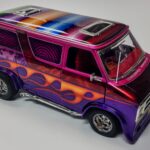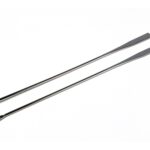Mastering Paint Thinning for Airbrushing: Acrylic and Lacquer Paints
The Myth of “Milk Consistency”
A common guideline for thinning paint is to aim for the “consistency of milk,” but this vague reference often leads to confusion. Social media discussions are filled with conflicting advice, from topping off bottles with thinner to arbitrary ratios. Instead of relying on guesswork, achieving the perfect airbrush ratio requires precision and understanding the variables at play.
Key Variables Affecting Paint Thinning
Thinning paint isn’t a one-size-fits-all process. These factors influence the outcome:
- Airbrush Setup: Type, nozzle design, spray pattern, needle size, and MAC valve settings.
- Compressor Settings: Air pressure, compressor type (with or without air tank), and airflow volume.
- Paint Characteristics: Viscosity, pigment quality, type, age, and how thoroughly it’s mixed.
- Experience: Proficiency, trigger control, and the specific airbrushing style (single or double action).
- Measurement Consistency: Thinner type, ratios, and paint preparation methods.
Airbrushing Styles: Coverage vs. Fine Detail
Airbrushing techniques generally fall into two categories:
- Base Coating: For uniform layers of paint.
- Detail Work: For artistic or intricate patterns.
Each style requires different paint thinning and airbrush settings, highlighting the need for a tailored approach.
The Goldilocks Ratio: 50–80% Thinner to Paint
Achieving the perfect ratio depends on precise measurements rather than guesswork. Start with a 1:1 thinner-to-paint ratio and adjust incrementally. When measuring:
- Use drops for small volumes (20 drops ≈ 1 mL).
- Most airbrush paint cups hold around 7 mL (140 drops). Fill the cup about halfway, or ½ to ¾ full if back bubbling is used for mixing.
Step-by-Step Guide to Paint Thinning
1. Set the Air Pressure
- Adjust the air pressure to 1.5 bar (21 psi) while holding the airbrush trigger halfway.
- The pressure may read higher when idle but will stabilize during operation.
2. Establish a Baseline Ratio
- Start with a 1:1 thinner-to-paint ratio as a baseline.
- Gradually increase thinner or paint, testing after each adjustment.
3. Use Styrene Test Cards
- Cut 3-inch (72 mm) squares from bulk styrene sheets.
- Styrene replicates the nonabsorbent surface of models, providing accurate feedback compared to paper towels.
Building Consistency: The 8 Data Points
Achieving airbrushing mastery involves refining these data points:
- Consistent Airflow: Maintain steady airflow at the set pressure.
- Thinner-to-Paint Ratio: Start with a baseline and adjust incrementally.
- Spray Test: Observe how paint flows on the styrene test card.
- Adjustments: Make small changes and retest.
- Documentation: Note ratios and results on the test card for future reference.
- Muscle Memory: Practice trigger control and airbrush techniques.
- Flow Awareness: Pay attention to airflow and paint trigger pull.
- Spray Pattern: Refine overlap, nozzle distance, and spray consistency.
Troubleshooting and Refinement
If results aren’t as expected, revisit the 8 data points to identify where adjustments are needed. With careful testing and practice, you can achieve consistent, high-quality airbrush results.




